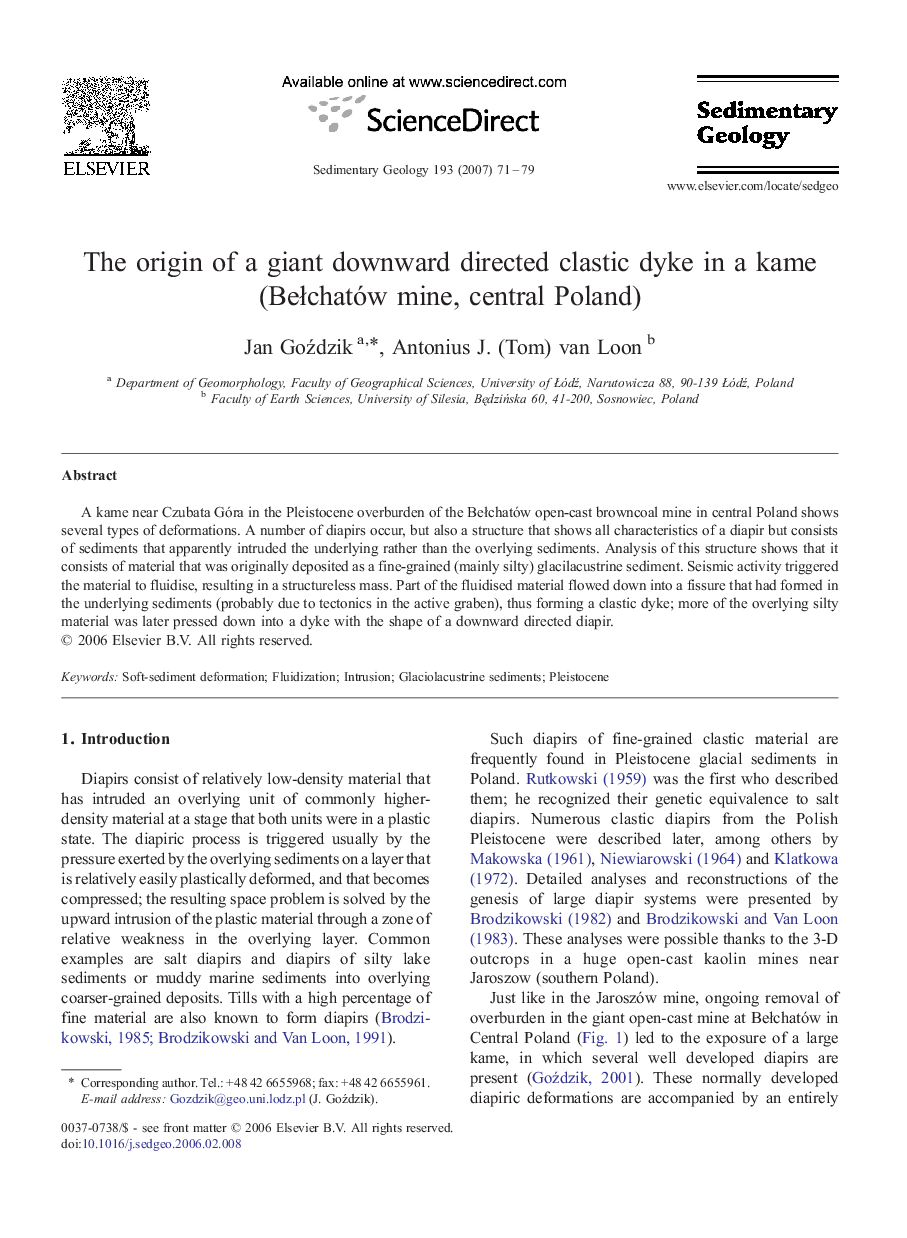| Article ID | Journal | Published Year | Pages | File Type |
|---|---|---|---|---|
| 4690853 | Sedimentary Geology | 2007 | 9 Pages |
Abstract
A kame near Czubata Góra in the Pleistocene overburden of the BeÅchatów open-cast browncoal mine in central Poland shows several types of deformations. A number of diapirs occur, but also a structure that shows all characteristics of a diapir but consists of sediments that apparently intruded the underlying rather than the overlying sediments. Analysis of this structure shows that it consists of material that was originally deposited as a fine-grained (mainly silty) glacilacustrine sediment. Seismic activity triggered the material to fluidise, resulting in a structureless mass. Part of the fluidised material flowed down into a fissure that had formed in the underlying sediments (probably due to tectonics in the active graben), thus forming a clastic dyke; more of the overlying silty material was later pressed down into a dyke with the shape of a downward directed diapir.
Related Topics
Physical Sciences and Engineering
Earth and Planetary Sciences
Earth-Surface Processes
Authors
Jan Goździk, Antonius J. (Tom) van Loon,
